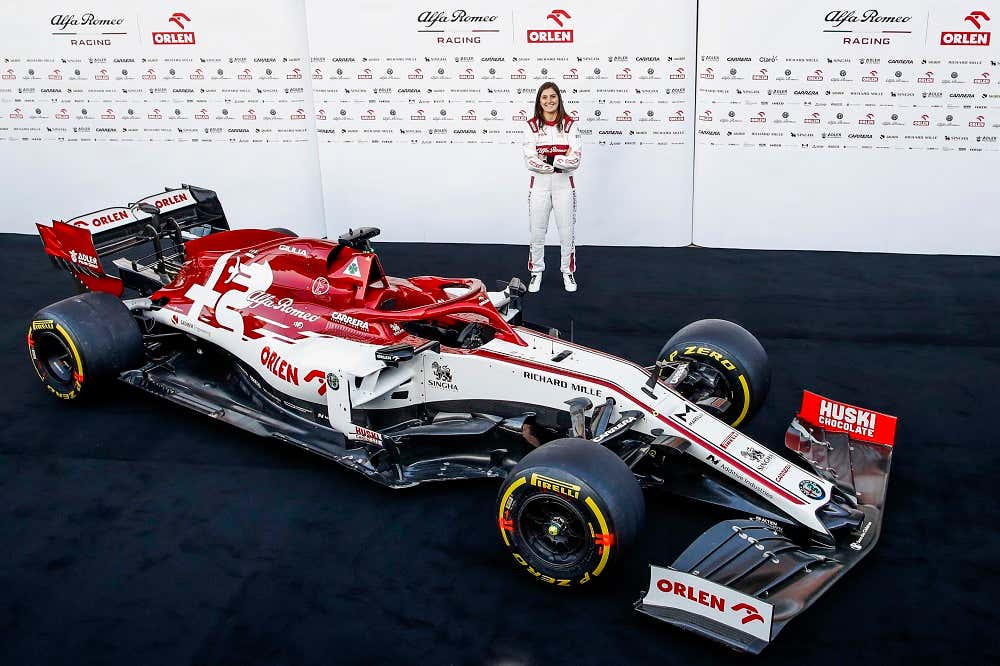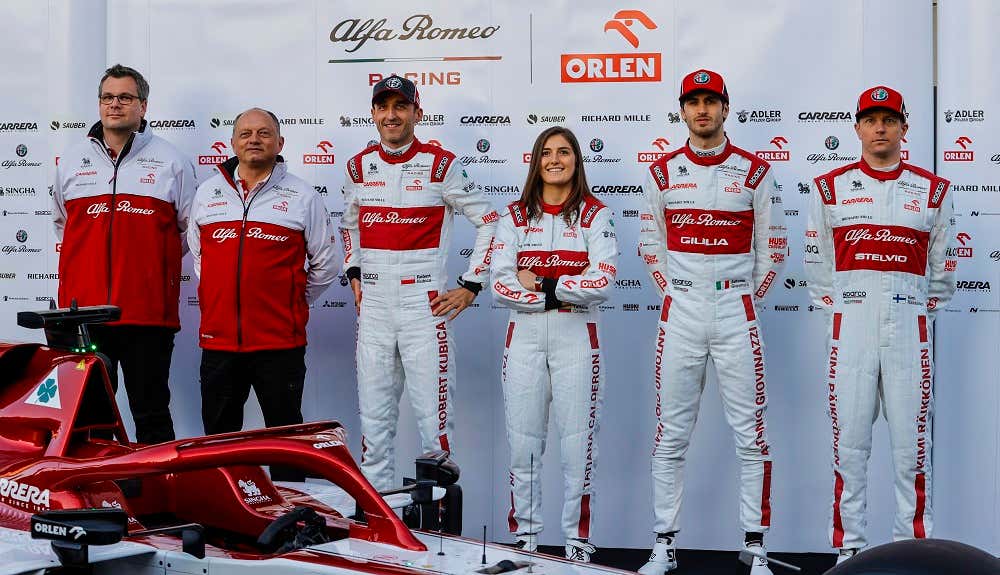Think about the most famous Formula 1 drivers you have ever heard of: Michael Schumacher, Lewis Hamilton, Ayrton Senna. Now, what do they have in common, aside from being multi-championship winners? They’re all male. For most, it’s hard to remember a female F1 driver, or if there’s ever been one to join the grid, period. There have been, as a matter of fact, and there’s another wave of female potential F1 drivers coming through the ranks right now. At the forefront is Tatiana Calderón, the first Latin-American woman to ever pilot an F1 car as Alfa Romeo’s test driver. But she has zero plans of stopping there.
For men or women, the road to the driver’s seat is strenuous. Becoming an F1 driver requires an incredible amount of money, time, and fortitude. That’s even more true for women, who have a different physiological makeup and fewer role models in the sport. It has been decades since a woman raced in a F1 grand prix, and Calderón and the next generation of young women have their eyes on the pinnacle racing. In 2016, then-chief of F1 Bernie Ecclestone (who has a history of ill-advised public comments) fired everyone up when he said women “wouldn’t be taken seriously” as F1 drivers because he didn’t think a woman could physically be able to drive an F1 car quickly.
Calderón had something to say about that.
“I want to be a full time Formula 1 driver; that’s my dream. It’s why I wake up in the morning,” she told The Drive via video during an Alfa Romeo virtual roundtable. “No one should put limits to what you can achieve. Find your passion and follow your dreams and work hard. Use the bad comments and people putting you down to motivate you. I absolutely feel there are no limits.”
Calderón is about 5’3” and working steadily and determinedly toward increasing her physical strength, especially in her neck. The G-forces of F1 racing put an incredible strain on a body’s neck and back, and every driver has to layer on mental toughness to withstand punishing laps. The cars are developed for men’s bodies, and female competitors must adapt. Calderón modified her pedals and steering wheel for the best fit; as she puts it, “when you’re multitasking and going 300 kilometers per hour, you cannot be uncomfortable.” F2 is perhaps even more physical in some aspects because the cars don’t have power steering, so training her body is critical. She says her neck has grown nine centimeters because of her upper-body training.
She is working toward the top level of motorsport after competing in Formula 3 cars from 2013 to 2017. Throughout her career, Calderón has driven against men and believes that competing against the best is the only way to compete and improve. Even Jamie Chadwick, the winner of the women-only W Series last year, initially saw gender segregation as a roadblock.
“My initial thought process was, ‘If I’m raising X amount of sponsorship to do this, why would I put it into something that might not be so competitive?’” Chadwick told The Guardian. After she met the people behind it and discovered the deep funding for the W Series, she believed it gave young female drivers the chance to drive cars they might not otherwise have access to. Even more importantly, young women in the program can accrue super license points, which are necessary to progress up the chain to Formula 1.
Racer Ryan Lewis wrote an article for The Drive focused on the W Series, saying it has focused so much on the driver aspect of it that they’ve forgotten that this is an excellent opportunity to develop the upcoming generation of female racing engineers, mechanics, aerodynamicists, and racing officials.
“Just imagine little girls being able to point at racers and engineers alike and think ‘I can do that’ or ‘I want to do that.’ All of a sudden, the series goes from featuring 20 female racers to 20 female racers plus 20 female mechanics, 10 engineers, et cetera,” he wrote. “The $500,000 championship prize seems minuscule compared to the potential tsunami of women entering the sport.”
Calderón is an ambassador for the Federation Internationale de l’Automobile (FIA)’s Women in Motorsport Commission, which was created to encourage more women to participate.
The FIA’s Girls on Track Rising Stars program, which Calderón supports proudly, has partnered with the esteemed Ferrari Driver Academy. The idea is to give two women at least one full season of races in their regional Formula 4 Championship, with an eye toward the chance to work their way through F3, F2, and eventually F1 racing. Calderón says providing the girls with the best materials will give them a chance to hone their skills.
For her, though, the answer has never been to segregate. She says women can compete at the highest level, but for girls still in their teen years, she wants them to get more exposure and practice for the future. When you start to compete internationally, Calderón said that women have to earn respect on and off track.
“If you want to race against the best, you have to participate with the best regardless of gender,” Calderón said. “I have learned a lot and when you compete against the best you know where you stand and where you can improve.”
Got a tip? Send us a note: [email protected]
Source: Read Full Article


